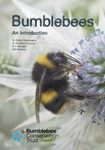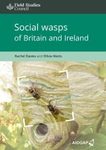![Evolution and Phylogeny of Bees Evolution and Phylogeny of Bees]()
Click to have a closer look
About this book
Contents
Customer reviews
Related titles
About this book
Language: English with bilingual summary in English and German
Volume 161 of Zoologica reviews and analyses the evolution and phylogeny of bees. It is subdivided into two parts.
Part One: A Preamble to the Evolution and Phylogeny of Bees provides a complete and critical review of all previous attempts to reconstruct the phylogenetic tree of bees (Anthophila / Apiformes) based on morphological, bionomic and molecular approaches and presented in chronological sequence up to and including recent publications. At the same time, the introductory part examines trends in the classification of bees and compares available hypotheses of bee evolution. Part One closes with a family-wise delineation of the fossil history of bees.
Part Two: A Phylogenetic Study of Bees in Light of Morphological Evidence adds an experimental study to complement the bibliographical analysis provided in Part One. The phylogenetic relationships of the larger taxonomic units of bees are tested anew using an extensive dataset of selected morphological features. The study uses all common and current computer-aided techniques of cladistic analysis (parsimony, successive/implied weight, Bayesian and neighbor-joining), which are applied to representatives of all seven families, 22 subfamilies and 48 of 58 tribes of bees. The conclusions drawn from this are evaluated for the major groups (i.e., short-tongued and long-tongued bees), and separately for the families, subfamilies and tribes in each case.
In a world currently dominated by molecular genetic approaches to phylogeny, this study clearly demonstrates that it is not anachronistic to engage in morphological efforts, because progress can be significantly advanced and the pool of available scientific arguments enriched. The diversity of the object of investigation justifies a variety of methods.
Evolution and Phylogeny of Bees is a much needed reference work of high practical value for all students of bee evolution, phylogeny and morphology. Further, it is ideally suited as good introductory reading material for university level students.
Contents
Abstract 1
Zusammenfassung 2
Part I: A Preamble to the Evolution and Phylogeny of Bees 4
Introduction 4
Trends in Bee Classifi cation 7
Th eories on the Evolution of Bees 16
Wasp Ancestry and Bee Classifi cation 35
Morphological Phylogeny of Bees 50
Molecular Phylogeny of Bees 66
Parasitic Bees 78
Antiquity of Bees 78
Part II: A Phylogenetic Study of Bees in Light of Morphological Evidence 99
Introduction 99
Methods 99
Species Investigated 108
List of Characters 108
Data Matrix 143
Results and Discussion 143
Statistical Results and Cladograms 143
Major Divisions of Bees 174
Short-Tongued Bees 175
Family Halictidae 177
Family Andrenidae 187
Family Stenotritidae 201
Family Colletidae 202
Family Melittidae 218
Long-Tongued Bees 229
Family Megachilidae 231
Family Apidae 244
Summary 317
Acknowledgements 327
References 327
Appendix A:
Family-Group Names of Bees 359
Appendix B:
Description of New Family-Group Names 362
Customer Reviews


















![Die Eiszeitlibellen der Alten Welt: Pleistozäne Biogeographie Paläarktischer Libellen [Ice-Age Odonata of the Old World. The Pleistocene Biogeography of Palearctic Dragonflies]](http://mediacdn.nhbs.com/jackets/jackets_resizer_medium/24/245896.jpg?height=150&width=111)




















